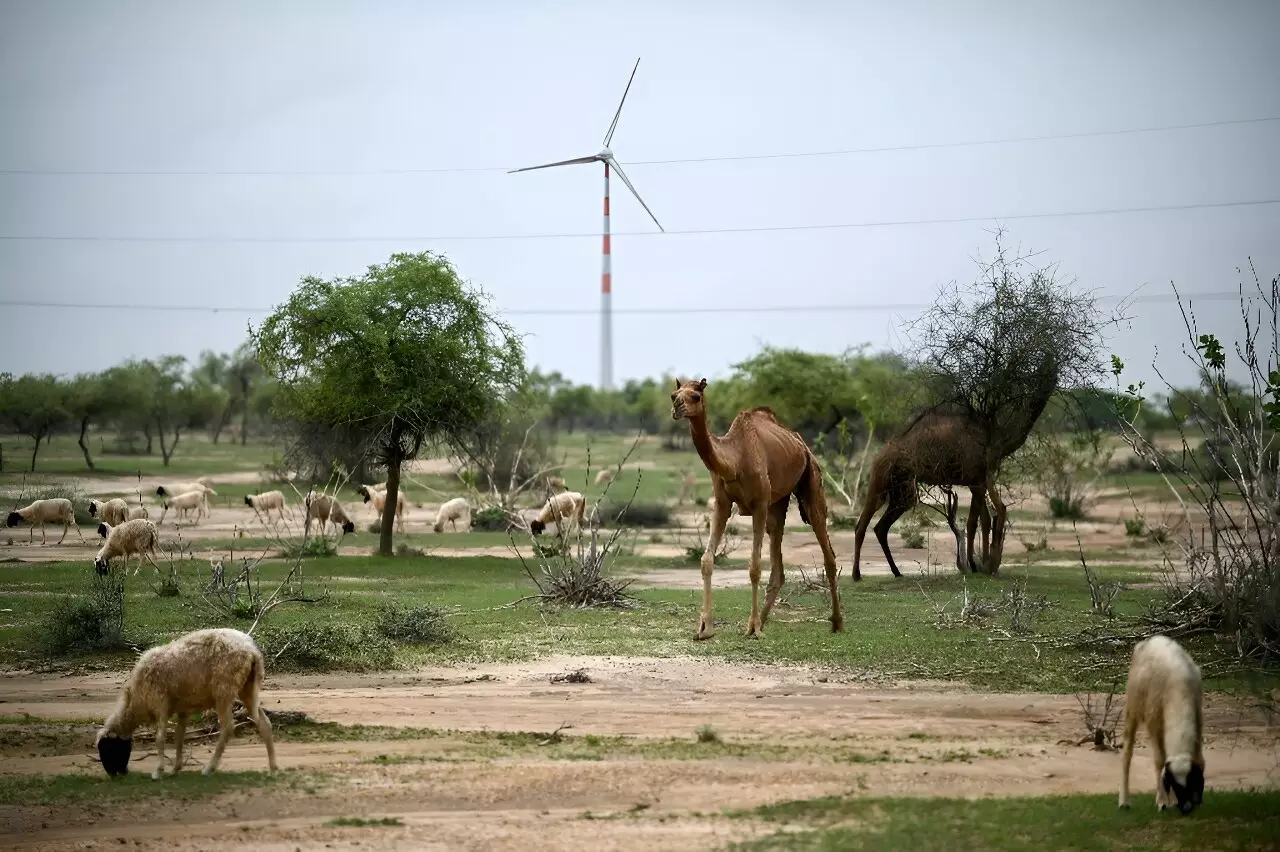India stands at a pivotal crossroads in its quest for sustainable energy sources, particularly as it grapples with the dual challenges of climate change and energy demands. While the country enthusiastically expands its renewable energy capacity—highlighted by numerous wind farms sprouting across the expansive Thar Desert—this green ambition often comes with significant costs to local communities. The intricate balance between promoting renewable projects and addressing the grievances of residents reveals a troubling narrative that underscores the complexities of environmental justice.
Centrally located in the Jaisalmer district of Rajasthan, wind farms have emerged as the vanguard of India’s renewable energy strategy. The region, characterized by blistering temperatures and arid landscapes, now hosts hundreds of wind turbines. The promise of clean energy is paramount, enhancing the power grid and reducing dependency on fossil fuels. However, the people who inhabit the shadows of these turbines frequently contend that their traditional livelihoods have been eroded in favor of corporate interests.
The concerns echoed by local livestock herder Nena Ram encapsulate the sentiment of many residents. As the land that once provided ample grazing opportunities for camels, cattle, and goats is overtaken by wind farms, the local economy is dislocated. The turbines, enormous and imposing, disrupt not just the physical landscape but also the socio-economic fabric of these communities. Culpably, the developers often promote their initiatives as beneficial to local welfare, claiming to support education and health services. However, these benefits ring hollow to those who feel their land and way of life have been sacrificed for corporate gain.
The ecological ramifications of wind farm installations extend beyond simple land displacement. The intricate balance of local biodiversity faces threats, particularly to iconic indigenous species such as the Great Indian Bustard. Once plentiful, this bird’s population is now under severe threat, with only about 150 individuals left nationally. As wires crisscross the skies and turbines loom, the delicate ecosystems are disrupted, leading to increased mortality rates among vulnerable wildlife. This reality starkly contrasts with the narratives presented by renewable energy proponents.
Despite directives from the Supreme Court to mitigate the impact of power lines on bird habitats, the prioritization of energy targets supersedes ecological concerns. It indicates a troubling trend where the urgency of renewable energy expansion may inadvertently undermine the very environmental objectives such initiatives are supposed to address. The nuanced relationship between development and conservation remains an elusive goal, too often sidelined in favor of immediate energy needs.
In this pursuit of renewable energy, a disturbing paradox arises—while the overall energy capacity increases, local populations frequently find themselves cut off from its benefits. The Jaisalmer district experiences regular power cuts despite being home to one of India’s largest wind farms. As the power generated is frequently redirected to meet the demands of urban centers, residents in nearby villages are left to endure prolonged outages, exacerbating their daily struggles, especially during the scorching summer months.
This frustration highlights a significant disconnect between the objectives of national energy policy and the lived realities of rural citizens. Aspirations to achieve massive goals, such as a target of 500 gigawatts of non-fossil fuel capacity by 2030, often seem to eclipse the immediate needs of those in close proximity to renewable installations. The ongoing energy crisis for local residents juxtaposes sharply against the backdrop of ambitious national targets, raising critical questions about equity in energy distribution.
As India accelerates its renewable energy ambitions, a critical reassessment of how these projects are structured and implemented is necessary. Sustainable development cannot come at the cost of marginalized communities’ rights and well-being. To truly harness the potential of renewable resources, India must prioritize inclusive policies that mitigate adverse impacts on local populations.
Engaging communities in decision-making processes, ensuring fair compensation for land use, and preserving biodiversity should be integral components of future energy projects. Moreover, a paradigm shift that treats local habitats and cultures as valuable components of the renewable energy narrative will foster a more balanced approach to energy generation.
While India’s pursuit of renewable energy heralds a promising shift towards sustainability, a more conscientious effort is critical to ensure that the benefits of such progress are shared equitably. By recognizing and addressing the concerns of local communities, the nation can cultivate a genuinely green future that respects both its people and the environment.


Leave a Reply